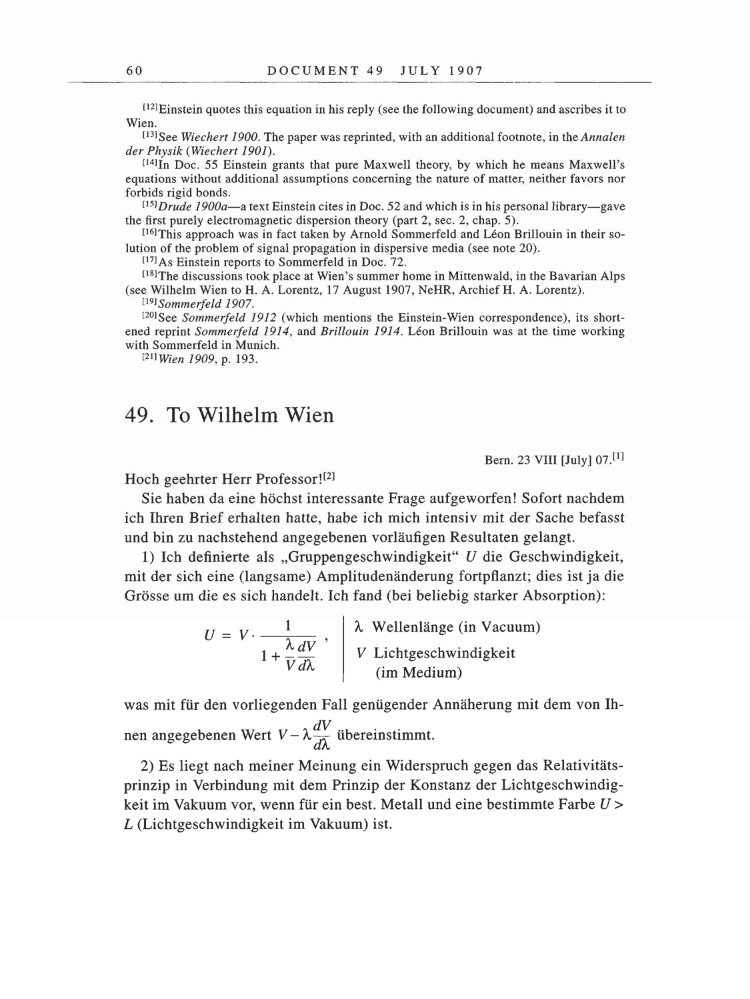60 DOCUMENT 49 JULY 1907 [12]Einstein quotes this equation in his reply (see the following document) and ascribes it to Wien. [13]See Wiechert 1900. The paper was reprinted, with an additional footnote, in the Annalen der Physik (Wiechert 1901). [14]In Doc. 55 Einstein grants that pure Maxwell theory, by which he means Maxwell's equations without additional assumptions concerning the nature of matter, neither favors nor forbids rigid bonds. [15]Drude 1900a-a text Einstein cites in Doc. 52 and which is in his personal library-gave the first purely electromagnetic dispersion theory (part 2, sec. 2, chap. 5). [16]This approach was in fact taken by Arnold Sommerfeld and Leon Brillouin in their so- lution of the problem of signal propagation in dispersive media (see note 20). [17]As Einstein reports to Sommerfeld in Doc. 72. [18]The discussions took place at Wien's summer home in Mittenwald, in the Bavarian Alps (see Wilhelm Wien to H. A. Lorentz, 17 August 1907, NeHR, Archief H. A. Lorentz). [19]Sommerfeld 1907. [20]See Sommerfeld 1912 (which mentions the Einstein-Wien correspondence), its short- ened reprint Sommerfeld 1914, and Brillouin 1914. Leon Brillouin was at the time working with Sommerfeld in Munich. [21]Wien 1909, p. 193. 49. To Wilhelm Wien Bern. 23 VIII [July] 07.[1] Hoch geehrter Herr Professor![2] Sie haben da eine höchst interessante Frage aufgeworfen! Sofort nachdem ich Ihren Brief erhalten hatte, habe ich mich intensiv mit der Sache befasst und bin zu nachstehend angegebenen vorläufigen Resultaten gelangt. 1) Ich definierte als "Gruppengeschwindigkeit" U die Geschwindigkeit, mit der sich eine (langsame) Amplitudenänderung fortpflanzt dies ist ja die Grösse um die es sich handelt. Ich fand (bei beliebig starker Absorption): U = v-1 i+idv VdX X. Wellenlänge (in Vacuum) V Lichtgeschwindigkeit (im Medium) was mit für den vorliegenden Fall genügender Annäherung mit dem von Ih- dV nen angegebenen Wert V- übereinstimmt. 2) Es liegt nach meiner Meinung ein Widerspruch gegen das Relativitäts- prinzip in Verbindung mit dem Prinzip der Konstanz der Lichtgeschwindig- keit im Vakuum vor, wenn für ein best. Metall und eine bestimmte Farbe U L (Lichtgeschwindigkeit im Vakuum) ist.
